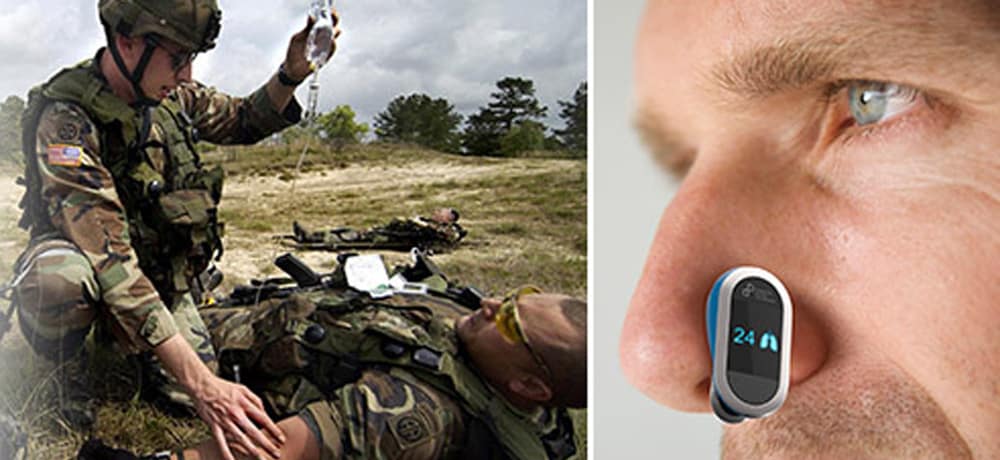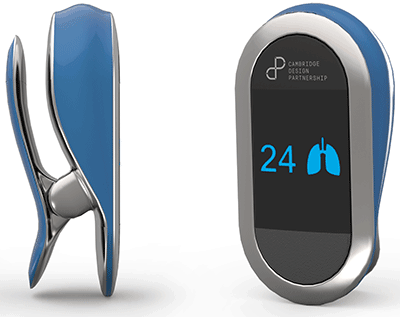
The First Response Monitor clips on to a patient’s nose and transmits vital sign measurements to a tablet or smartphone in real time via Bluetooth. Medics can monitor the heart and respiratory rates of multiple patients, with graphs displaying changes over time. According to the designers, this will enable medical staff to focus on giving care, and to prioritise those in most need of treatment.
“With the First Response Monitor we’ve combined our expertise in wearable connected devices with our extensive medical experience to develop a technology for effectively measuring breathing and heart rate,” said James Baker, partner at Cambridge Design Partnership.
During development, Cambridge Design Partnership spoke to a number of army medics. The company says it identified a need to bridge the gap between time-consuming manual methods of taking vital signs, and more expensive patient monitoring systems.

It also says that while many wearable devices exist for monitoring heart rate, respiratory rate is often forgotten. According to Cambridge Design Partnership, the ability to accurately measure both heart and respiratory rates for multiple patients has the potential to save lives in emergency situations.
“The monitor can help save lives in a variety of environments and we’re really keen to speak to partners about developing the potential applications further,” said Baker.
Although the First Response Monitor has been designed primarily with mass casualty incidents in mind, the company believes it has other applications, including sports training, wellness monitoring, and as a low-cost solution for low resource healthcare settings.











Deep Heat: The new technologies taking geothermal energy to the next level
No. Not in the UK. The one location in the UK, with the prospect of delivering heat at around 150°C and a thermal-to-electrical efficiency of 10-12%,...